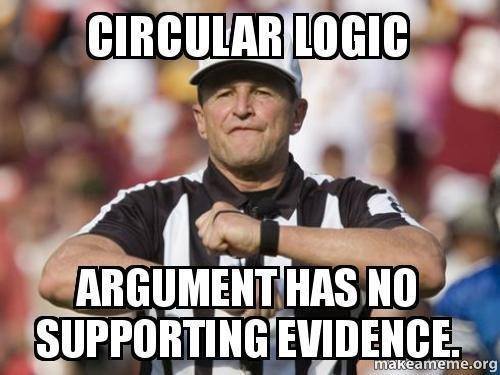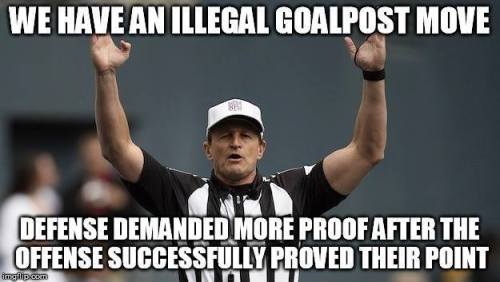Eternaljourneytmbr - Untitled

More Posts from Eternaljourneytmbr and Others
src for bite force figure in tags: Freeman, Patricia W. and Lemen, Cliff A., "Measuring Bite Force in Small Mammals with a Piezo-Resistive Sensor" (2008). Mammalogy Papers: University of Nebraska State Museum.
Normally would say 'Lasiurini are never not cute', but this particular image...

Hoary bat
no source, was sent to me. posting it because it's fucking funny

Spectral Bat, photographed by Alexandre Grave, (source)







So I just found the most useful photo album in existence for tumblr arguments





Lets bother cuddle mama
Brandt's Bat: researchers once documented a case in which a Brandt's bat had survived in the wild for more than 40 years, making this the longest-living bat species in the world

In 1964, a wild Brandt's bat (Myotis brandtii) was captured, banded, and released by researchers in the Biryusa region of Siberia. The very same bat was eventually recaptured by another team of researchers in 2005; it would have been at least 41 years old by then, making it the oldest bat ever recorded.
The previous record-holder was also a Siberian Brandt's bat (with an estimated age of 38 years).

There are twelve other species within the genus Myotis that have been documented living past the age of 20, but the lifespan of the Brandt's bat is exceptionally long, especially compared to other small mammals.
This species (and the longevity of a few other bat species) defies our conventional understanding of the relationship between an animal's size and its lifespan -- smaller animals normally have a much shorter lifespan compared to large animals, partly due to their higher metabolic demands, but these bats represent a rare exception to that rule. In fact, with an average weight of just 4 to 8 grams (which is roughly the combined weight of 2 or 3 pennies), the Brandt's bat has the longest lifespan of any mammal relative to its size.

Research suggests that its increased lifespan may be at least partially linked to a mutation in two of the genes that are related to growth. This article describes the results of one particular study:
Genes for two proteins involved in growth — called growth hormone receptor (GHR) and insulinlike growth factor 1 receptor (IGF1R) — showed changes that also appear among other long-lived bat species. Previous studies in mice and other animals suggest genetic changes in GHR and IGF1R are linked with longevity. For instance, mice with mutations in GHR live twice as long as normal mice, said study researcher Vadim Gladyshev, a geneticist at Brigham and Women's Hospital in Boston.
These same genetic changes also may be responsible for the bats' small size ...
"We think the bat's life span is, in part, an unintended consequence of its small body size."

There are a few other factors that may also play a role:
Brandt's bats also hibernate and roost in caves — behaviors that may help them avoid predators and extreme weather conditions, and contribute to their longer life span, the researchers said. The Brandt's bat also takes a relatively long time to reach maturity, and it does not produce many offspring — two characteristics seen in larger, longer-living mammals.

Note: nearly all of the articles that I came across refer to the 41-year-old bat as a "Brandt's bat," but at least one other source uses the term "Siberian whiskered myotis," instead. That term simply refers to the Siberian variety of the Brandt's bat (subspecies Myotis brandtii sibiricus) in particular.
Sources & More Info:
The Journals of Gerontology: A New Field Record for Bat Longevity
Bat Conservation International: Myotis brandtii
Nature: Genome Analysis Reveals Insights into Physiology and Longevity of the Brandt's Bat, Myotis brandtii
Nature: DNA Methylation Predicts Age and Provides Insight Into Exceptional Longevity of Bats
New Scientist: Gene Clues May Explain Why Brandt's Bat Lives So Long

Spinoffs: Space Station Innovations in Your Cart (and Heart!)
You might think NASA technology is just spaceships and telescopes, but did you know the camera in your cell phone is, too? It’s one of many NASA innovations now found everywhere on Earth.
The International Space Station has had crew living on it for 25 years straight. In that time, the space station has enabled a tremendous amount of research, helping NASA and scientists better understand long-term living in space – but it’s not just knowledge coming back down to Earth! Technologies developed for the space station and experiments conducted aboard the orbiting lab also benefit people on the planet below. Here are a few of these inventions, or spinoffs, you can find in your everyday life.

A Sunscreen That Blocks Radiation in Space – and on Your Face
After surviving for 18 months outside the International Space Station, an extremely hardy organism is now improving sunscreens and face cream products from a cosmetics company, which licensed use of the organism from NASA’s Jet Propulsion Laboratory.


Build Muscle With or Without Gravity
Muscles atrophy quickly in space, so when astronauts began long stays on the International Space Station, they needed some specialized exercise equipment. A resistance mechanism made of a coiled metal spring formed the basis of the first way for astronauts to “lift weights” in space. Soon after, that same design became the heart of compact home gym equipment.

Fresh Greens Every Day of the Year
The need to grow fresh food in space pushed NASA to develop indoor agriculture techniques. Thanks to the agency’s research, private companies are building on NASA’s vertical farm structure, plant-growth “recipes,” and environmental-control data to create indoor farms, resulting in higher crop yields and better-quality produce while conserving water and energy and eliminating the need for pesticides.

Cultivating Hearts and Knees in Space
Gravity is a significant obstacle to bioprinting cells and growing human tissue on Earth because heavier components settle to the bottoms of petri dishes. In the absence of gravity, each cell layer stays in place, which is how it’s possible to grow heart and knee tissue on the space station. The same principle also allows mixing of complex pharmaceuticals on orbit.

Storing Oodles of Energy
NASA chose nickel-hydrogen batteries to power the Hubble Space Telescope and the International Space Station because the technology is safe, reliable in extreme temperatures, and long-lived. NASA’s improvements brought down the cost of the technology, which is now used by large-scale utilities and renewable power plants that need to store energy generated by intermittent sources.
You can read about many more products sourced from the ISS on spinoff.nasa.gov.
Make sure to follow us on Tumblr for your regular dose of space!

Just a bat hangin out on your dash.

In the YA Animal Fantasy genre of the 00′s there are your Warrior Cats, your Guardians of Ga’hoole and your David Clement-Davies series.
Then there’s Silverwing. Holy fucking hell, there’s Silverwing. The Silverwing series doesn’t stand out to me in that is groundbreaking or particularly poignant or a valid commentary of society or what have you. What makes it stand out is that it’s So. Fucking. Weird.
Like, ok. There’s a blood feud between the bats and the owls. The bats are under penalty of death if they look at the SUN. And the owls and manipulate fire. Also some scary cannibal bat fuckers are running amok being creepy and murdery and the owls are now waging genocide on the bats because they’ve been framed.
And that’s the first BOOK!
Things that also happen in the series: Canada is at war with Brazil. Humans use bats and owls as bio warfare against one another. There is a BAT HELL. Antagonists make pact with ancient Death God who wants to come to the world of the living and turn everyone into zombies.
It’s a great read for Halloween.
Here’s some characters. I LOVE Bats. So it was a joy to portray each of the characters based on their respective species.
Art is mine. Characters belong to Kenneth Oppel bless his soul.

Attribution © Juan Cruzado Cortés some rights reserved
-
 beigetiger liked this · 2 months ago
beigetiger liked this · 2 months ago -
 fizzypoptrig reblogged this · 3 months ago
fizzypoptrig reblogged this · 3 months ago -
 gazolinahan liked this · 3 months ago
gazolinahan liked this · 3 months ago -
 blue-keyed-piano liked this · 4 months ago
blue-keyed-piano liked this · 4 months ago -
 arionthemoon liked this · 4 months ago
arionthemoon liked this · 4 months ago -
 angrypandakitties liked this · 4 months ago
angrypandakitties liked this · 4 months ago -
 abefaery liked this · 4 months ago
abefaery liked this · 4 months ago -
 emluvscats69 liked this · 4 months ago
emluvscats69 liked this · 4 months ago -
 jamssim liked this · 4 months ago
jamssim liked this · 4 months ago -
 just-a-seal12 liked this · 4 months ago
just-a-seal12 liked this · 4 months ago -
 princessloveweird liked this · 4 months ago
princessloveweird liked this · 4 months ago -
 azngurl-al3x liked this · 4 months ago
azngurl-al3x liked this · 4 months ago -
 zero-sloane liked this · 4 months ago
zero-sloane liked this · 4 months ago -
 gwenthewolfuniverse liked this · 4 months ago
gwenthewolfuniverse liked this · 4 months ago -
 pretty-red-spider-lily liked this · 4 months ago
pretty-red-spider-lily liked this · 4 months ago -
 cloudyelysian liked this · 4 months ago
cloudyelysian liked this · 4 months ago -
 flamerose15 liked this · 4 months ago
flamerose15 liked this · 4 months ago -
 mayfromhome liked this · 4 months ago
mayfromhome liked this · 4 months ago -
 that-chillinthe-air liked this · 4 months ago
that-chillinthe-air liked this · 4 months ago -
 thegreyjoyed liked this · 4 months ago
thegreyjoyed liked this · 4 months ago -
 snburntandsad liked this · 4 months ago
snburntandsad liked this · 4 months ago -
 peachesona liked this · 4 months ago
peachesona liked this · 4 months ago -
 enchantingsirenpeacock liked this · 4 months ago
enchantingsirenpeacock liked this · 4 months ago -
 ghxstcherries liked this · 4 months ago
ghxstcherries liked this · 4 months ago -
 calicocat45 liked this · 4 months ago
calicocat45 liked this · 4 months ago -
 lilcritterdoingmabest liked this · 4 months ago
lilcritterdoingmabest liked this · 4 months ago -
 icybluefox liked this · 4 months ago
icybluefox liked this · 4 months ago -
 reallytiredperson liked this · 4 months ago
reallytiredperson liked this · 4 months ago -
 untilspringcomes liked this · 4 months ago
untilspringcomes liked this · 4 months ago -
 runawaypuppet liked this · 4 months ago
runawaypuppet liked this · 4 months ago -
 carsmakepplstupid liked this · 4 months ago
carsmakepplstupid liked this · 4 months ago -
 rayes-of-sunshine liked this · 4 months ago
rayes-of-sunshine liked this · 4 months ago -
 xxxxboredxxxx liked this · 4 months ago
xxxxboredxxxx liked this · 4 months ago -
 enyooshiro liked this · 4 months ago
enyooshiro liked this · 4 months ago -
 bellus-libertas liked this · 4 months ago
bellus-libertas liked this · 4 months ago -
 bubba1759 liked this · 4 months ago
bubba1759 liked this · 4 months ago -
 pupuzo liked this · 4 months ago
pupuzo liked this · 4 months ago -
 hellokitty4eva liked this · 4 months ago
hellokitty4eva liked this · 4 months ago -
 majestichugs liked this · 4 months ago
majestichugs liked this · 4 months ago -
 solar-raccoon liked this · 4 months ago
solar-raccoon liked this · 4 months ago -
 strawberrrydeer liked this · 4 months ago
strawberrrydeer liked this · 4 months ago -
 samslovebug liked this · 4 months ago
samslovebug liked this · 4 months ago -
 superbunny05 liked this · 4 months ago
superbunny05 liked this · 4 months ago -
 mothman-juicy-ass liked this · 4 months ago
mothman-juicy-ass liked this · 4 months ago -
 dabisstapledonballsack liked this · 4 months ago
dabisstapledonballsack liked this · 4 months ago -
 aierenthefan liked this · 4 months ago
aierenthefan liked this · 4 months ago -
 fallenstars22 liked this · 4 months ago
fallenstars22 liked this · 4 months ago -
 ayyyyyyyycasperrrr liked this · 4 months ago
ayyyyyyyycasperrrr liked this · 4 months ago -
 k1llthef00l liked this · 4 months ago
k1llthef00l liked this · 4 months ago -
 sleepdeprivedkat reblogged this · 4 months ago
sleepdeprivedkat reblogged this · 4 months ago

